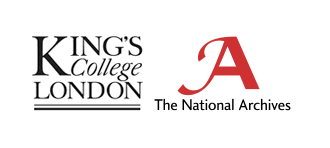Significant properties and digital preservation
The fundamental challenge of digital preservation is to preserve the accessibility and authenticity of digital objects over time and domains, and across changing technical environments. This requires acceptance both of the inevitability of change, and of the inherent separation of the logical information object from its physical environment. Any successful preservation strategy must reconcile the requirement to maintain the fixity/integrity of that logical information object, with the inevitable transformation of the technical environment in which the object resides.
Significant properties are those aspects of the digital object which must be preserved over time in order for the digital object to remain accessible and meaningful. An institution with curatorial responsibility for digital objects cannot assert or demonstrate the continued authenticity of those objects over time, or across transformation processes, unless it can identify, measure, and declare the specific properties on which that authenticity depends. Nor can it undertake the preservation actions required to maintain access to those objects, unless it can characterise their current technical representations with sufficient detail.
InSPECT Project
The InSPECT (Investigating the Significant Properties of Electronic Content Over Time) project was funded by JISC between March 2007 and March 2009 under the Repositories and Preservation programme. It was led by the Arts and Humanities Data Service (AHDS) Executive until its demise in March 2008, and then by the Centre for e-Research (CeRch) at Kings College London. CeRch was assisted by project partners at The National Archives (TNA).
The InSPECT project utilised design methods to identify the functions performed by an Object in its current manifestation and evaluate if they are required by other stakeholders. It adapted the Function-Behaviour-Structure (FBS) framework, a framework developed by John Gero to assist engineers and designers with the process of creating and re-engineering systems. By considering the purpose of the object in conjunction with the stakeholder that uses it, an auditor may determine the functionality and, by extension the properties, that are necessary to maintain over time. By focussing upon the properties that are essential, the institution may adopt a preservation strategy that is faster, simpler to perform and less costly than alternative strategies that maintain all elements of the object. Further information on the InSPECT methodology may be found in the InSPECT Framework Report
Final Report
A copy of the InSPECT final report is now available, describing the work that was performed in the project and the lessons learnt.
Learn more
Please contact Stephen Grace (stephen.grace AT kcl.ac.uk) and Gareth Knight (gareth.knight AT kcl.ac.uk) for questions related to the InSPECT project
About this web site
This web site went live on 1st August 2007 and was last updated on 26th February 2010. It was developed by Gareth Knight, based upon a WordPress template by Michael Heilemann
Project Funder
The InSPECT project was funded by JISC under the Repositories and Preservation Programme


